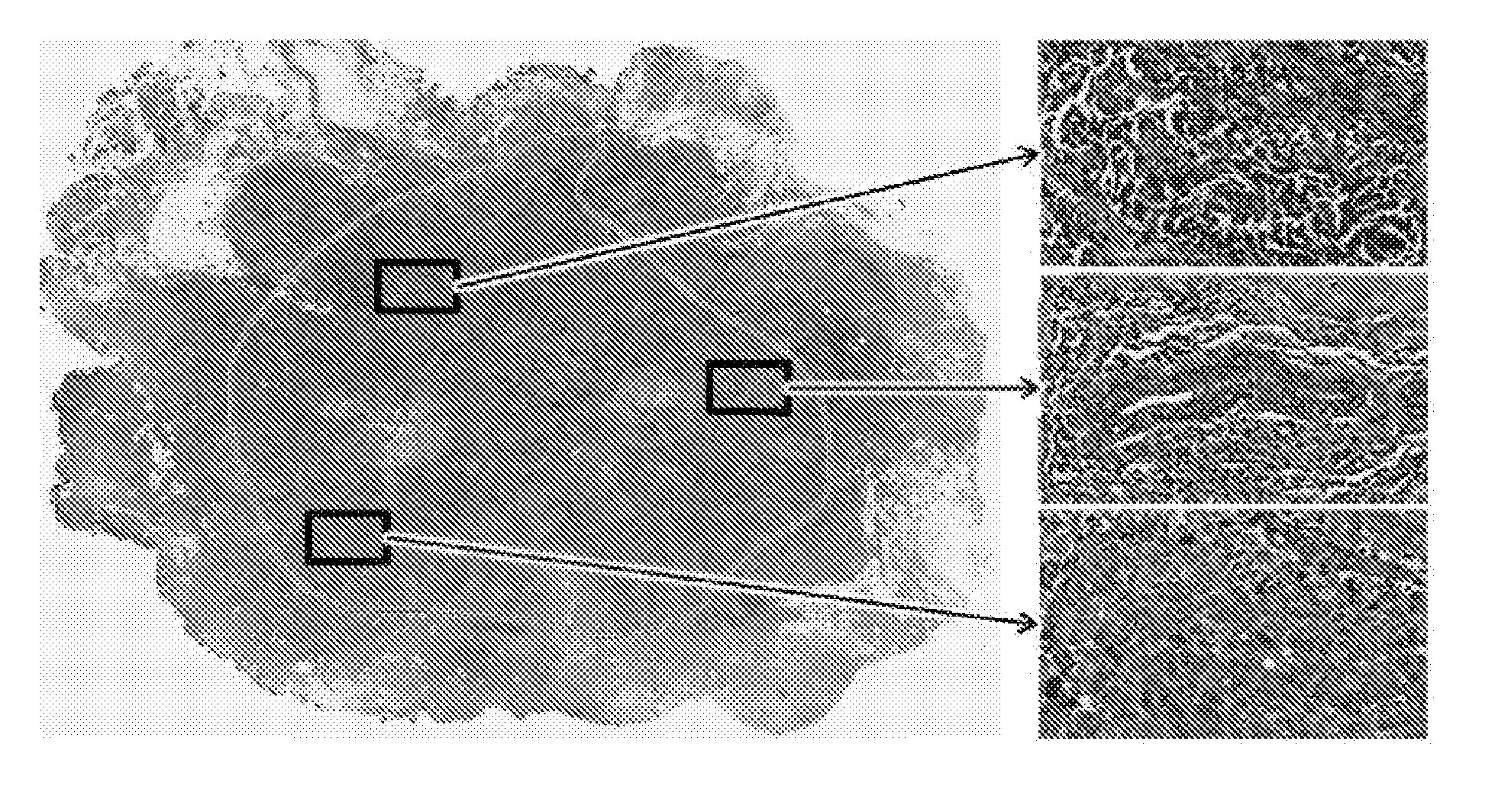Boosted consensus classifier for large images using fields of view of various sizes
a large image and consensus technology, applied in image enhancement, image analysis, instruments, etc., can solve the problems of inability to accurately and efficiently quantify image analysis tools, inability to accurately reflect the level of malignancy or heterogeneity based on isolated fovs, and inability to accurately reflect the level of malignancy or heterogeneity
- Summary
- Abstract
- Description
- Claims
- Application Information
AI Technical Summary
Benefits of technology
Problems solved by technology
Method used
Image
Examples
example 1
Evaluation of the Boosted, Multi-Field-of-View (Multi-FOV) Classifier to Distinguish Breast Cancer Patients of Differential Grading by Nuclear Architecture Extraction
[0256]This example demonstrates the ability of the boosted, multi-field-of-view (multi-FOV) classifier of the present invention to distinguish patients with low and high grades in breast cancer (BCa) histopathology images.
Dataset
[0257]Hematoxylin and eosin stained histopathology slides from 55 patients (36 low grade, 19 high grade) at the Hospital of the University of Pennsylvania were digitized via a whole slide scanner at 10× magnification (1 μm / pixel resolution). Each slide C is accompanied by (1) annotations from an expert pathologist denoting large regions of interest containing invasive cancer and (2) Bloom-Richardson (BR) grade labels denoting low (BR 3-5) or high (BR 7-9) grade. A wide range of FOV sizes (T={250, 500, 1000, 2000, 4000} pixels) was selected for analysis.
[0258]FIG. 6 shows exemplary breast cancer ...
example 2
Evaluation of the Boosted, Multi-Field-of-View (Multi-FOV) Classifier to Distinguish Breast Cancer Patients of Differential Grading by Nuclear Architecture Extraction and Nuclear Texture Extraction
[0267]This example demonstrates the ability of the boosted, multi-field-of-view (multi-FOV) classifier of the present invention to distinguish patients with low vs. high BR grade, low vs. intermediate BR grade, and intermediate vs. high BR grade in breast cancer (BCa) histopathology images.
Dataset
[0268]BCa histopathology slides were obtained from 126 patients (46 low BR, 60 intermediate BR, 20 high BR) at the Hospital of the University of Pennsylvania and The Cancer Institute of New Jersey. All slides were digitized via a whole slide scanner at 10× magnification (1 μm / pixel resolution). Each slide was accompanied by BR grade as determined by an expert pathologist. Commonly accepted clinical cutoffs used to define the low (BR 3-5), intermediate (BR 6-7), and high (BR 8-9) grade classes were...
experiment 1
Whole Slide Classification Using Nuclear Architecture
[0269]The ability of the boosted, multi-field-of-view (multi-FOV) classifier to discriminate entire BCa histopathology slides based on BR grade via architectural features {circumflex over (f)}NA was evaluated. Since the multi-FOV classifier utilizes a trained classifier, it is susceptible to the arbitrary selection of training and testing data. A 3-fold cross-validation scheme was used to mitigate such bias by splitting the data cohort into 3 subsets in a randomized fashion, from which 2 subsets are used for training and the remaining subset is used for evaluation. The subsets were subsequently rotated until a class prediction H(D; {circumflex over (f)}NA)ε{0,1} was made for each slide. A slide was said to be correctly classified if the class prediction matches the ground truth label (i.e. BR grade) assigned to the slide. The entire cross-validation procedure was repeated 20 times and mean classification results were reported.
PUM
 Login to View More
Login to View More Abstract
Description
Claims
Application Information
 Login to View More
Login to View More - R&D
- Intellectual Property
- Life Sciences
- Materials
- Tech Scout
- Unparalleled Data Quality
- Higher Quality Content
- 60% Fewer Hallucinations
Browse by: Latest US Patents, China's latest patents, Technical Efficacy Thesaurus, Application Domain, Technology Topic, Popular Technical Reports.
© 2025 PatSnap. All rights reserved.Legal|Privacy policy|Modern Slavery Act Transparency Statement|Sitemap|About US| Contact US: help@patsnap.com



